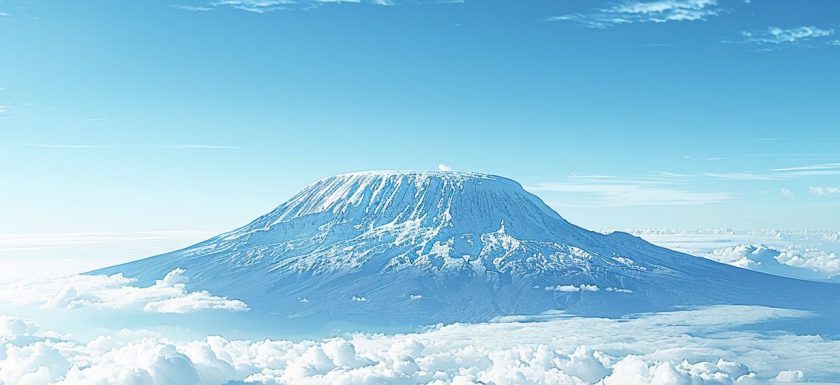
Climbing Kilimanjaro is a dream for many adventure seekers around the world.
But where exactly is Kilimanjaro located and what makes this majestic mountain so special? People climb Kilimanjaro for various reasons, including personal achievement, the thrill of adventure and challenge, connection with nature, and cultural experiences.
Besides the physical benefits, climbing Kilimanjaro also offers mental health benefits, personal growth opportunities, and raises environmental awareness.
Challenges like altitude sickness, physical demands, and unpredictable weather conditions must be considered. To successfully conquer Kilimanjaro, proper physical training, packing essentials, and acclimatization strategies are crucial.
Whether you’re a seasoned climber or a first-timer, preparing for the climb of a lifetime is essential for a safe and memorable experience.
Key Takeaways:
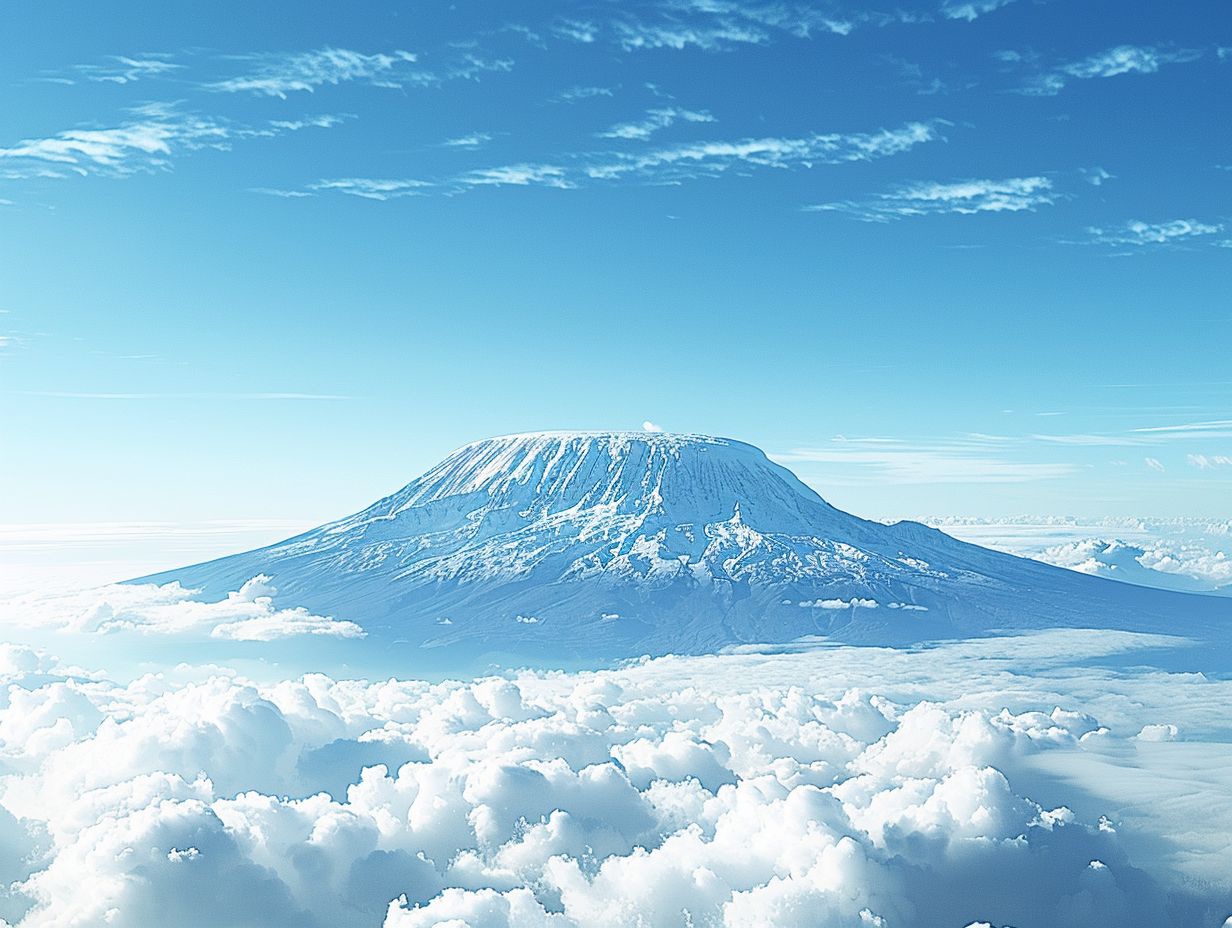
- Climbing Kilimanjaro is a personal achievement that pushes individuals out of their comfort zone and provides a sense of accomplishment.
- Climbing Kilimanjaro offers a unique adventure and challenge that allows individuals to connect with nature and experience different cultures.
- Climbing Kilimanjaro has physical and mental health benefits, fosters personal growth, and raises awareness for environmental conservation.
Why Do People Climb Kilimanjaro?
People undertake the challenge of climbing Kilimanjaro for various reasons, including the desire to conquer one of the Seven Summits, the thrill of reaching the iconic Uhuru Peak, and the unique experience of scaling the highest mountain in Africa.
For many climbers, summiting Kilimanjaro represents not only a personal triumph but also a shared victory with fellow adventurers. The journey to the top tests one’s physical and mental limits, pushing individuals to exceed their perceived capabilities and embrace a sense of accomplishment that extends beyond the individual.
The camaraderie formed during the trek, the shared stories around the campfire, and the collective sense of achievement upon reaching the summit create lasting memories that bind climbers together. Whether aiming for personal growth, conquering fears, or seeking an unforgettable adventure, Kilimanjaro offers a transformative experience that stays with climbers long after they descend from its lofty heights.
Personal Achievement
Climbing Kilimanjaro is a remarkable personal achievement that signifies resilience, determination, and the ability to overcome challenges. Standing on the summit of this iconic mountain is a testament to one’s inner strength and commitment to reaching new heights.
As one conquers the arduous journey up Kilimanjaro’s slopes, not only is physical stamina tested, but also mental fortitude and emotional endurance are pushed to their limits. The sense of accomplishment that washes over a climber upon reaching Uhuru Peak is unparalleled, fostering a profound sense of pride and fulfillment. Each step towards the summit serves as a metaphor for overcoming obstacles in life, instilling a newfound belief in one’s capabilities and capacity for growth.
Adventure and Challenge
Embarking on a Kilimanjaro climb is not just an adventure; it is a test of physical and mental endurance. The journey to the summit presents a series of challenges that push climbers beyond their limits, making it a thrilling and rewarding adventure.
At every step up the majestic slopes of Mount Kilimanjaro, climbers face a unique combination of physical exertion and mental fortitude. The high altitude and ever-changing weather conditions add layers of complexity to the climb, requiring resilience and adaptability.
The surreal landscapes, ranging from dense rainforests to barren alpine deserts, offer both a visual spectacle and a demanding terrain to conquer.
Overcoming fatigue, altitude sickness, and the sheer magnitude of the challenge becomes a true test of willpower. Reaching the summit of this iconic mountain not only marks a personal triumph but also fosters a deep sense of achievement and self-discovery.
Connection with Nature
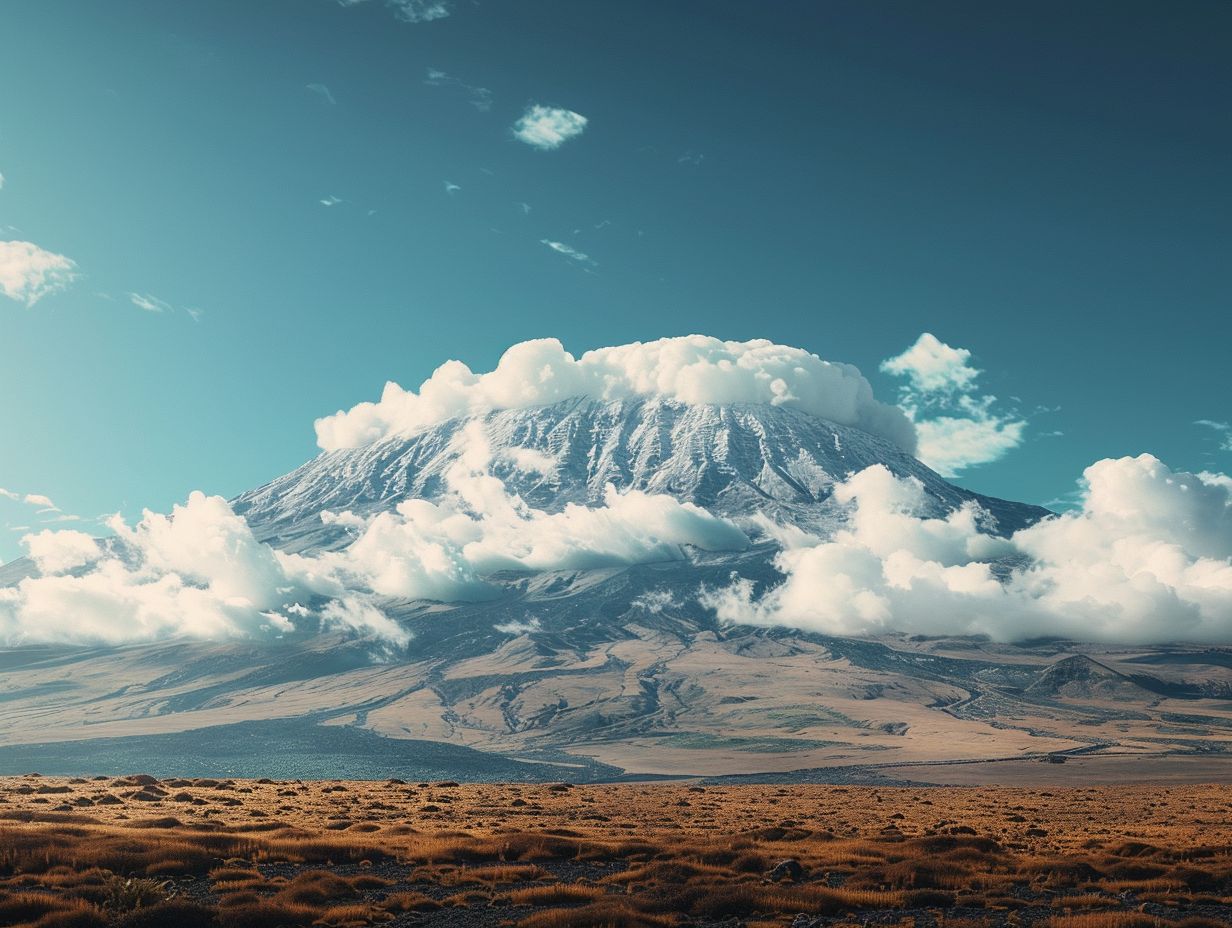
Climbing Kilimanjaro offers a unique opportunity to connect with nature on a profound level. The mountain’s diverse ecosystems, stunning landscapes, and abundant wildlife provide climbers with a deep sense of appreciation for the natural beauty of Africa.
Every step taken upward on this majestic peak unveils a new perspective of the surrounding environment. The towering snow-capped summit contrasted against the lush greenery below overwhelms climbers with a sense of awe and admiration for the forces of nature at play.
Trekking through the different ecological zones, from the cultivated farmlands to the otherworldly alpine desert, presents an unparalleled journey through Earth’s diverse habitats.
Amidst this wilderness, encounters with roaming wildlife such as monkeys, elephants, and unique bird species further enrich the experience, forging a lasting connection between adventurers and the natural world.
Cultural Experience
Beyond the physical challenge, climbing Kilimanjaro offers a rich cultural experience. Interacting with local communities, experiencing Swahili traditions, and immersing oneself in the vibrant culture of Moshi adds a unique dimension to the climb.
These cultural interactions often start as soon as climbers land at Kilimanjaro International Airport, where the warm welcome sets the tone for the journey ahead. As trekkers make their way through the bustling markets of Moshi, the sights, sounds, and smells awaken their senses to the beauty of local life. Sharing meals with the Chagga people, known for their hospitality, provides insights into their agricultural practices and daily rituals.
What Are the Benefits of Climbing Kilimanjaro?
Climbing Kilimanjaro offers a plethora of benefits, ranging from improved physical and mental health to personal growth and heightened environmental awareness. The journey to the summit is not just a climb; it is a transformative experience that leaves a lasting impact.
One of the most significant advantages of embarking on the Kilimanjaro expedition is the physical well-being it promotes. The rigorous trek up the mountain challenges your endurance, strength, and cardiovascular fitness, leading to a noticeable improvement in overall health.
The mental benefits of conquering such a formidable peak cannot be understated. The mental fortitude required to navigate the diverse terrains and weather conditions enhances your resilience and confidence.
On a personal level, scaling Kilimanjaro pushes you beyond your comfort zone, fostering growth and self-discovery. The sense of accomplishment when reaching Uhuru Peak instills a deep sense of pride and enablement, encouraging you to tackle other challenges in life with newfound vigor.
Environmental consciousness also blossoms during the ascent. Witnessing the raw beauty of the mountain and understanding the impact of human activity on such pristine environments instills a sense of responsibility towards nature conservation. The journey awakens a desire to protect our planet for future generations, promoting sustainable practices and a deeper connection to the natural world.
Physical and Mental Health Benefits
The physical and mental health benefits of climbing Kilimanjaro are immense. The rigorous trek not only strengthens the body but also sharpens the mind, fostering resilience, endurance, and a sense of accomplishment.
As climbers ascend the majestic slopes of Mount Kilimanjaro, they engage in a full-body workout, enhancing cardiovascular health, muscle tone, and overall physical fitness. The challenging terrain demands focus and determination, leading to increased mental clarity and improved problem-solving skills.
Being surrounded by the awe-inspiring beauty of the African landscapes and the sheer accomplishment of conquering the summit can bring about a profound sense of fulfillment and boost self-confidence.
Personal Growth and Development
Climbing Kilimanjaro is a transformative journey that fosters personal growth and development.
Confronting the physical and mental demands of scaling Kilimanjaro, individuals delve deep within themselves, finding hidden reservoirs of strength and resilience. As the altitude increases, so does the sense of accomplishment with each arduous step taken towards the summit.
The breathtaking landscapes and the camaraderie among fellow trekkers create a unique tapestry of experiences that redefine one’s limits and expand their horizons.
The lessons learned on the slopes of Kilimanjaro extend far beyond the trek itself. The journey becomes a metaphor for life’s challenges, teaching valuable insights about perseverance, adaptability, and the importance of pushing past comfort zones to reach new heights.
Environmental Awareness
Climbing Kilimanjaro raises environmental awareness and promotes sustainability in the region. The experience of witnessing the effects of climate change firsthand underscores the importance of preserving the natural beauty and ecological balance of Africa.
Many climbers who embark on this adventure take away a newfound appreciation for environmental conservation and the need for sustainable practices in every aspect of life. As they ascend the majestic peak, they are surrounded by the diverse flora and fauna unique to the region, reminding them of the delicate harmony that must be protected.
Guides and tour operators on the mountain often emphasize the Leave No Trace principles, ensuring that the trails and campsites are left undisturbed by human presence.
Through these conscious efforts, climbers not only challenge themselves physically but also become stewards of the environment, contributing to the ongoing conservation efforts that safeguard Kilimanjaro’s fragile ecosystem.
What Are the Challenges of Climbing Kilimanjaro?
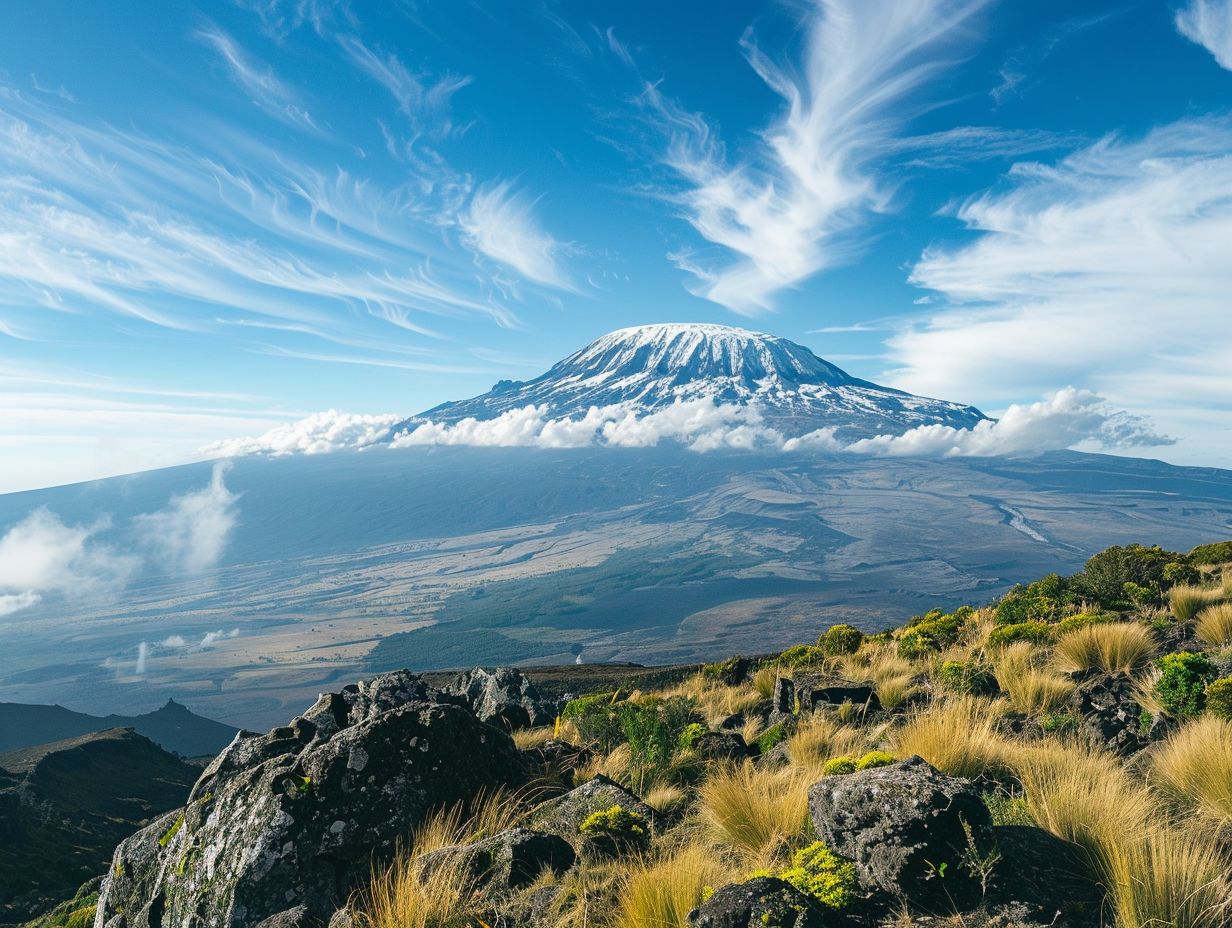
While climbing Kilimanjaro is a rewarding adventure, it comes with its fair share of challenges. From battling altitude sickness to enduring harsh weather conditions, climbers must navigate various obstacles to reach the summit successfully.
Altitude-related issues pose a significant threat to climbers as they ascend the towering peak of Kilimanjaro. Acute Mountain Sickness (AMS) can strike even the most experienced adventurers, causing symptoms like headaches, nausea, and fatigue. Facing these challenges requires proper acclimatization and careful monitoring of one’s health throughout the journey.
The physical demands of scaling Kilimanjaro should not be underestimated. Trekking for hours each day, carrying gear, and navigating steep terrain demand considerable stamina and strength. Endurance becomes key as climbers push themselves towards the summit, testing both physical and mental limits along the way.
The unpredictable weather on Kilimanjaro adds another layer of complexity to the climb. From scorching sun exposure to freezing temperatures, climbers must be prepared for diverse weather conditions that can change rapidly. Proper gear, including layers for insulation, waterproof clothing, and sturdy footwear, is essential to combat the challenging elements.
Altitude Sickness
Altitude sickness is a common challenge faced by climbers on Kilimanjaro due to the extreme elevations. The risk of altitude-related illnesses underscores the importance of proper acclimatization and preparation for a successful ascent.
Altitude sickness can manifest in various forms, such as headaches, nausea, dizziness, and shortness of breath, which can significantly hamper a climber’s progress.
Without adequate acclimatization, climbers are at risk of developing severe conditions like high altitude pulmonary edema (HAPE) and high altitude cerebral edema (HACE), which can be life-threatening.
To mitigate these risks, climbers are advised to ascend gradually, hydrate well, and pay attention to their bodies’ signals. Medications like acetazolamide can help prevent and alleviate symptoms of altitude sickness.
Physical Demands
The physical demands of climbing Kilimanjaro are substantial, requiring climbers to be in top physical condition. Endurance, strength, and stamina are essential attributes for tackling the steep terrain and long hours of trekking.
Mount Kilimanjaro, rising to an altitude of 19,341 feet, presents a formidable challenge to even the most experienced climbers. The high-altitude environment brings a diverse set of challenges, from reduced oxygen levels to extreme weather conditions. It is imperative to engage in rigorous cardiovascular fitness training to build endurance and stamina before attempting the ascent.
Weather Conditions
The weather conditions on Kilimanjaro can be unpredictable and challenging. Climbers must be prepared to face extreme temperatures, high winds, and rapid weather changes, necessitating the use of proper gear and safety precautions.
When tackling the slopes of Kilimanjaro, having the right gear is crucial to combat the harsh elements. Insulated clothing, sturdy boots, waterproof layers, and wind-resistant outerwear are essential to shield against the biting cold and strong gusts. Climbers need to be adaptable to sudden temperature shifts throughout the ascent, where conditions can vary drastically from the base to the summit.
Strategies such as layering clothes, staying hydrated, and pacing oneself can help mitigate the effects of extreme weather. It’s vital to listen to the guidance of seasoned guides who are well-versed in the mountain’s ever-changing climate patterns. Safety measures like regular health checkups, altitude acclimatization, and proper rest are paramount to a successful and secure climb.
How to Prepare for Climbing Kilimanjaro?
Effective preparation is key to a successful Kilimanjaro climb. From physical training to packing essentials and acclimatization strategies, proper preparation is essential for a safe and rewarding ascent to the summit.
Starting with physical training, it is crucial to build endurance and strength through a regular regimen that includes cardio exercises, hiking, and strength training to prepare your body for the demanding climb.
In terms of packing, lightweight clothing and gear are essential to reduce the load, including sturdy hiking boots, warm layers, a reliable sleeping bag, and high-energy snacks.
Acclimatization is key to avoid altitude sickness. Gradual ascent, staying hydrated, and taking time to adjust to the thinning air are vital components of a successful climb.
Success on Kilimanjaro often hinges on mental resilience and determination; staying positive, pacing yourself, and following the guidance of experienced guides can make all the difference in reaching the summit.
Physical Training
Physical training is crucial for preparing the body for the rigors of a Kilimanjaro climb. Endurance exercises, strength training, and cardiovascular workouts help build the necessary stamina and resilience required to conquer the mountain.
Endurance-building activities such as long hikes, running, and cycling are essential to condition the muscles and enhance oxygen uptake. Strength workouts focusing on the core, legs, and upper body contribute to improved balance and stability during the ascent.
Cardiovascular exercises like high-intensity interval training, stair climbing, and swimming elevate heart rate, enhancing overall endurance levels. The combination of these training modalities not only enhances physical capabilities but also boosts mental strength to tackle the challenges of altitude and terrain changes throughout the Kilimanjaro climb.
Packing Essentials
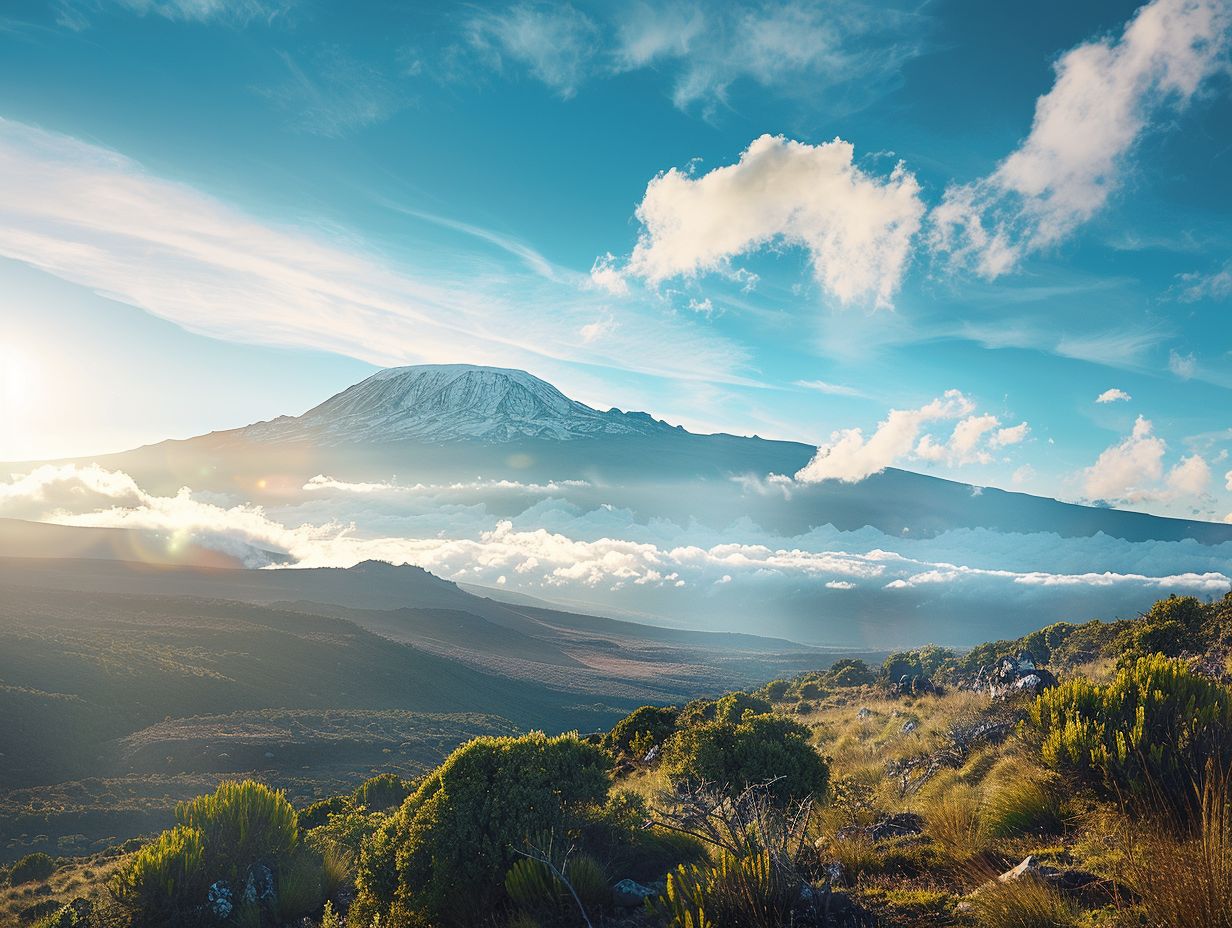
Packing the right essentials is crucial for a successful Kilimanjaro climb. From proper trekking poles and headlamps to essential clothing and hydration supplies, having the right gear and supplies can make a significant difference in the climb.
Ensuring you have sturdy hiking boots with good ankle support is imperative to navigate the challenging terrain while protecting your feet.
A warm, insulated sleeping bag and a reliable tent are essential for a restful night’s sleep in the mountain’s varying temperatures.
Don’t forget to pack high-energy snacks to keep you fueled during the long trek and a portable water filtration system to stay hydrated from natural water sources along the way.
Carrying a first aid kit with essential medical supplies and blister prevention tools is vital for addressing minor injuries swiftly, ensuring a safe and comfortable journey to the summit.”
Acclimatization Strategies
Acclimatization is a critical aspect of preparing for a Kilimanjaro climb. Gradual altitude gain, hydration management, and strategic rest stops play a vital role in helping climbers adapt to the changing altitudes and reduce the risk of altitude sickness.
When ascending a mountain as challenging as Kilimanjaro, giving your body time to adjust to the decreasing oxygen levels is key. Ensuring proper hydration by drinking plenty of water is crucial in combating altitude-related issues.
Scheduling regular rest breaks allows climbers to recover and acclimatize effectively, improving their stamina and overall climbing performance. Proper acclimatization not only enhances safety but also significantly increases the chances of reaching the summit successfully.
Frequently Asked Questions
Why Climb Kilimanjaro?
Climbing Kilimanjaro is a once in a lifetime experience that offers breathtaking views and a sense of accomplishment. Here are some FAQs to help you understand why so many people choose to climb this majestic mountain.
What makes Kilimanjaro a popular climbing destination?
Kilimanjaro is the highest mountain in Africa, standing at 19,341 feet. It is also the tallest freestanding mountain in the world, making it a popular challenge for adventurous climbers.
What are the benefits of climbing Kilimanjaro?
Climbing Kilimanjaro not only allows you to experience the beauty of the African wilderness, but it also offers physical and mental benefits. The trek requires physical fitness and determination, making it a great workout. It also offers a sense of accomplishment and can boost self-confidence.
What is the best time to climb Kilimanjaro?
The best time to climb Kilimanjaro is during the dry season, which is from June to October. This time of year offers clear skies and the best chance for a successful summit. However, it is also the busiest time, so if you prefer fewer crowds, you may want to consider climbing during the shoulder seasons of January-March or November-December.
How difficult is it to climb Kilimanjaro?
Climbing Kilimanjaro is considered a moderate trek, but it still requires physical fitness and mental preparation. The route you choose and the pace at which you climb can also affect the difficulty level. It is important to choose a reputable tour company and to have a good understanding of the physical demands before embarking on the journey.
What is the average time to climb Kilimanjaro?
The average time to climb Kilimanjaro is between 5-9 days, depending on the route you choose. It is important to allow enough time for acclimatization and a gradual ascent to reduce the risk of altitude sickness. Some routes are longer but offer a higher success rate for reaching the summit.